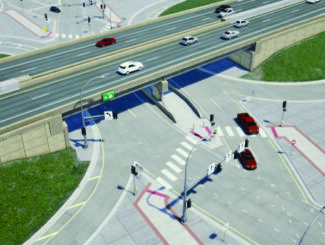November 15, 2022
By Amy Fredregill, SR Director of Sustainability, WSB
Electric vehicles (EV) are here, and consumer demand is growing. That means more communities are exploring how to integrate EV chargers into their city planning. The bipartisan federal infrastructure law passed last year, which created programs like the National Electric Vehicle Infrastructure (NEVI) Formula Program, opened the door for even more funding opportunities and grants for cities to install fast charging stations.
The problem, however, is that many cities don’t have an EV policy or goals in place. If communities don’t begin preliminary planning and outline larger policy goals, going after funding opportunities can leave cities scrambling and unprepared.
Here are a few tips and ideas that can help cities prepare for electric vehicle charging infrastructure and advance a plan that best fits the needs of residents and businesses, providing for positive future growth.
- Start the conversation and ensure policies are up to date. Initiating conversations with city administrators and/or city council members is an important first step, especially if electric vehicles have not been on the radar of community leaders to date. Determine what actions need to be taken including updating zoning codes. Do your codes allow for charging infrastructure or do guidelines need to be updated? Should the city encourage or require charging infrastructure with new construction? Is certain signage required where chargers are placed? Guidelines must be in place so that the community can meet its EV goals and promote orderly development.
- Determine your city’s plan and budget. Different communities have different goals for EVs, and it’s important to adopt goals that reflect the needs of residents, businesses, visitors, and the community. Does it make sense to take on an ownership model where the community owns the EV charging stations and related infrastructure, including maintenance and upkeep? Will it make more sense to work with a third-party vendor to own and operate the equipment on city property? Is your city installing chargers for city owned EVs? Should the ownership model be the same as publicly available chargers or different for fleet vehicles? By clearly defining and establishing structured goals and budgets, cities can determine what works best for their city, staff capacity, and budgets.
- Work with your utilities and look at your infrastructure power capabilities. As more EV chargers are built and utilized, cities must also look if they have the infrastructure and power capacity to support it. Utilities will sometimes help cover the cost of upgrading power systems or help find ways to balance capacity by setting higher fees at peak demand times. By working to communicate costs and decisions with utility companies, cities can avoid undue stress and complications. It is important to consider upfront costs, monthly or annual fees, and possible profit both in the short and long term based on the ownership model you determined in #2. Additionally, working with your building maintenance and electrical teams can help you understand your building’s electrical capacity.
- Consider why these upgrades are important. Growing consumer demand and more funding for EV infrastructure are just two of the reasons why cities should have an EV plan in place. Some communities are using their fast-charging infrastructure to attract business and residents, advertising itself as an EV ready city. Still other communities find opportunities to partner with companies to place charging stations in popular areas to boost visits to local restaurants and businesses. EV infrastructure can also help communities reach their sustainability goals as transportation is the largest source of greenhouse gas emissions.
There is no one-size-fits-all EV plan for cities, and WSB is ready to assist with determining a strategy and workplan, policy writing, grant applications, reviewing zoning guidelines, and whatever else communities need to advance an electric vehicles infrastructure plan that’s right for your community.
Bridget serves as the Sustainability Program Manager at WSB, helping propel sustainability projects and opportunities forward for our clients to reduce costs while meeting their community and stakeholder needs. She has led the Sustainability Growth Coalition at Environmental Initiative and served as chair of the St. Louis Park, MN Environment and Sustainability Commission, moving forward progress on climate and energy, while engaging community members and business leaders.
brathsack@wsbeng.com | 920.202.0234


